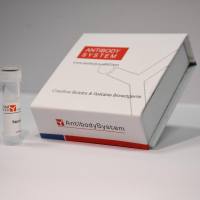Chromatin Immunoprecipitation Experiments to Investigate In Vivo Binding of Arabidopsis Transcription Factors to Target Sequences
互联网
互联网
相关产品推荐

InVivoMAb 抗小鼠 CD274/PD-L1/B7-H1 Antibody (10F.9G2),InVivo体内功能抗体(In Vivo)
¥2700

ZBP1/ZBP1蛋白/DNA-dependent activator of IFN-regulatory factors;DAI;Tumor stroma and activated macrophage protein DLM-1蛋白/Recombinant Human Z-DNA-binding protein 1 (ZBP1)重组蛋白
¥69

Mannan Binding Lectin/MBL2重组蛋白|Recombinant Human MBL2 / MBL / COLEC1 Protein
¥2310

creN7/creN7蛋白Recombinant Sulfolobus islandicus Chromatin protein Cren7 (creN7)重组蛋白creN7; LS215_1335Chromatin protein Cren7蛋白
¥2328

MAPKAP1/MAPKAP1蛋白Recombinant Human Target of rapamycin complex 2 subunit MAPKAP1 (MAPKAP1)重组蛋白mSIN1蛋白
¥1344
相关问答

